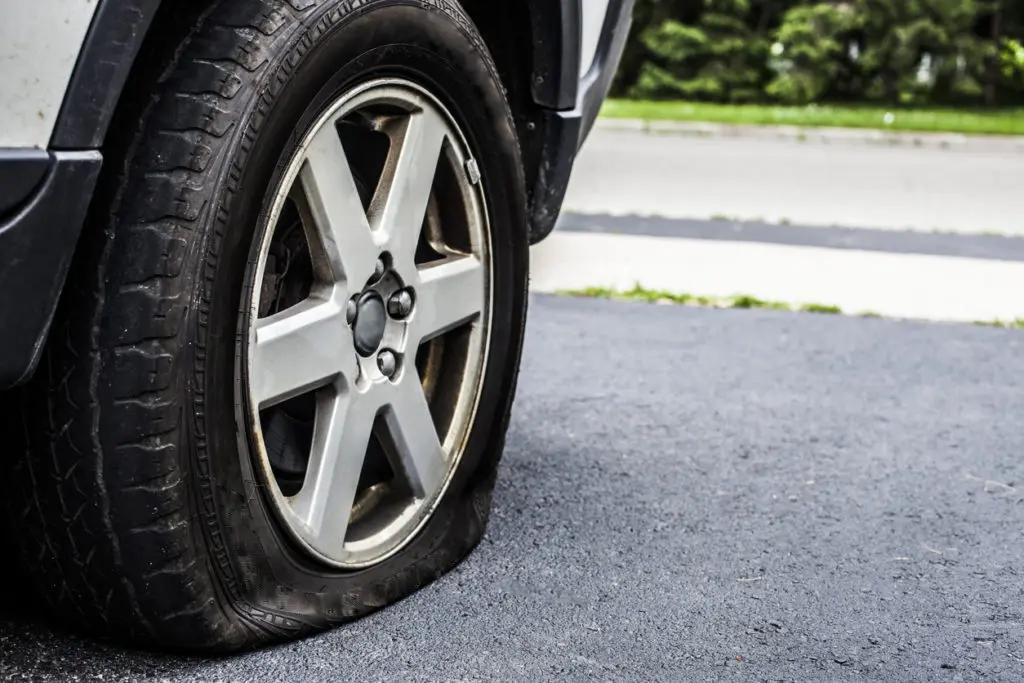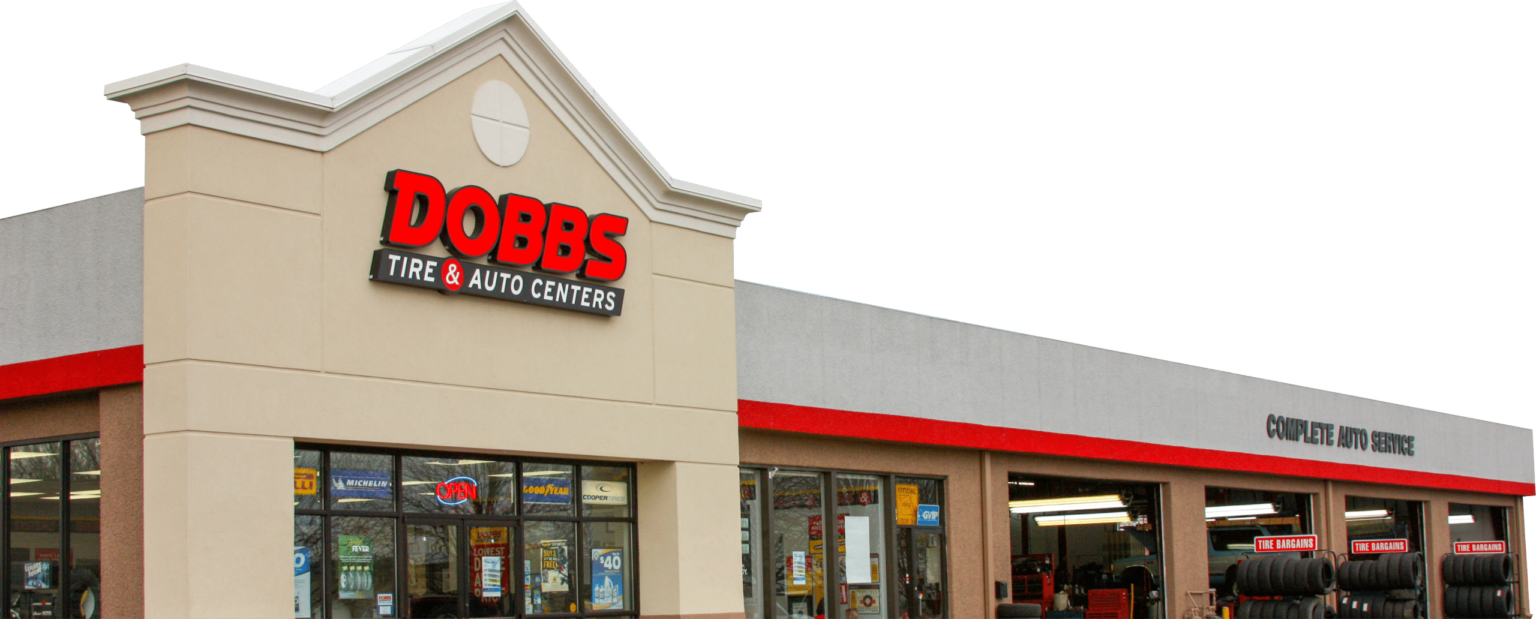What to Do if You Get a Flat Tire
Tires are your only connection to the road – a single square foot of rubber is what makes it possible to take off, take corners, and come to a safe stop. The typical automobile tire is a well-constructed piece of material, including steel and synthetic bands and cords, layers of rubber, and an extra-thick traction layer.
Inflated properly, a single typical car tire can carry over 2,000 pounds. Mounted and balanced and placed on a vehicle with a good alignment, some tires can last up to 100,000 miles before they require replacement. Still, because they’re basically well-constructed balloons, they are fragile in their own special way.
Tire pressure is critical to the safety, traction, and lifespan of a tire, and varies over time and temperature. Tires naturally lose a couple psi per month, maybe more, and fluctuate pressure as the climate changes. A tire set to 35 psi in July could easily fall below 20 psi in November, which is why it’s a good idea to check and adjust tire pressure on a weekly basis. Don’t forget to check and adjust the spare tire, too! The nice thing is that doing so takes just a few minutes and even the average person can do it without any special training.
Still, even if you do that part correctly, there’s always the danger that you might hit something in the road that can damage your tire. A lost car part, bolt, sharp rock – we’ve even seen animal bones and branches puncture tires – may cause a flat tire when you least expect it and usually when it’s most inconvenient.
You’ve Got a Flat Tire, Now What?
If you’re on the road and you notice your vehicle pulling to one side or you hear a “flopping” sound at one corner of the car, then you’ve probably got a flat tire.
Turn on your hazard lights, the four-way flashers, and pull off the road safely so you can survey the damage. Look for a driveway, parking lot, or the breakdown lane If you’re on the highway. Be sure you’re well off the road and on a flat area in case you need to put on the spare tire.
A Couple Things to Try
If you have a tire inflator – you can find one at a local auto parts store – try inflating the tire and see if it holds air. Try to find the leak by looking for whatever foreign object is still lodged in the tire or using a spray solution of dish soap and water, which will bubble up wherever air is escaping. Don’t forget to check around the bead, sidewall, and tire valve stem. If you can find the leak, you can attempt a temporary repair by removing the foreign object and plugging the hole, but take it to your local trusted mechanic for a proper repair job. If you can’t find the leak, but the tire holds air, you may be able to drive your vehicle. Keep your speed below 35 mph and drive directly to the shop so it can be diagnosed and repaired.
If you don’t have an inflator, the tire doesn’t hold air, or you can’t find the leak and repair it, perhaps the best option would be to put on the spare tire. The instructions for your specific vehicle are located in the owner’s manual. If you don’t have yours, you can get one from your dealership, eBay or Amazon, or maybe even free at JustGiveMeTheDamnManual.com. Vehicle-specific information might include specific jacking points and tool location, but what follows is a general idea of how to change your flat tire for the spare tire.
Removing the Flat Tire
- Check that the spare tire is properly inflated. Hopefully that was part of your weekly tire maintenance plan, but if it isn’t inflated or holding air, just stop and call a tow truck or a friend. If you have a good spare tire, jack, and tools, go ahead and go to Step 2.
- Make sure your vehicle is on flat level ground – move if necessary. Turn your vehicle off and put it in Park.
- Use the lug nut wrench to break loose all the lug nuts on the flat tire, but do not remove them. We’re using the weight of the vehicle to help us loosen those lug nuts. If you can’t loosen all four or five lug nuts on the flat tire – righty-tighty lefty-loosey, don’t forget! – you might need some more leverage or a bigger friend. Be careful jumping on the wrench, because you can hurt yourself.
- Once you’ve gotten all the lug nuts loosened, you can jack up the vehicle. Again, refer to the owner’s manual for the right jacking point. Jack up the vehicle until the flat tire is off the ground. Be careful never to put any body part under the vehicle while it is jacked up.
- Remove all the lug nuts and set them aside. Take off the flat tire and slide it under the vehicle right next to the jack. In case the jack fails, the wheel will hold your vehicle off the ground.
Mounting the Spare Tire
- Move the spare tire into place. You’ll probably have to jack the vehicle up a little more to make room for the new tire. Mount the spare tire and put on all the lug nuts. Use the lug nut wrench to get them all snug so the spare tire doesn’t wobble.
- Remove the flat tire from next to the jack and put it back where the spare tire was, or in the trunk or bed. Lower the car until the spare tire is fully supporting your car and put the jack away.
- Use the lug nut wrench to tighten the lug nuts as best you can, using a star pattern – 1-3-2-4, 1-3-5-2-4, or 1-3-5-2-4-6.
- Drive directly to your trusted automobile repair shop to have your flat tire repaired or replaced and set the proper torque on the lug nuts. If you’re using a not-full-size temporary spare tire, or “donut” spare tire, do not exceed 35 mph on your way to the shop.
Dobbs Tire & Auto Centers is Here to Help
We know that keeping your car in good shape, from the tires to the engine, can seem complicated, but Dobbs Tire & Auto Centers knows what your car needs and when. Whether you need new tires or you just want to make your tires last as long as possible, ask one of our friendly associates to help you out. We’ll give you an honest appraisal of your car’s needs and explain anything you don’t understand. With 45 locations, there’s bound to be a Dobbs Tire & Auto Centers convenient to your home or work.

